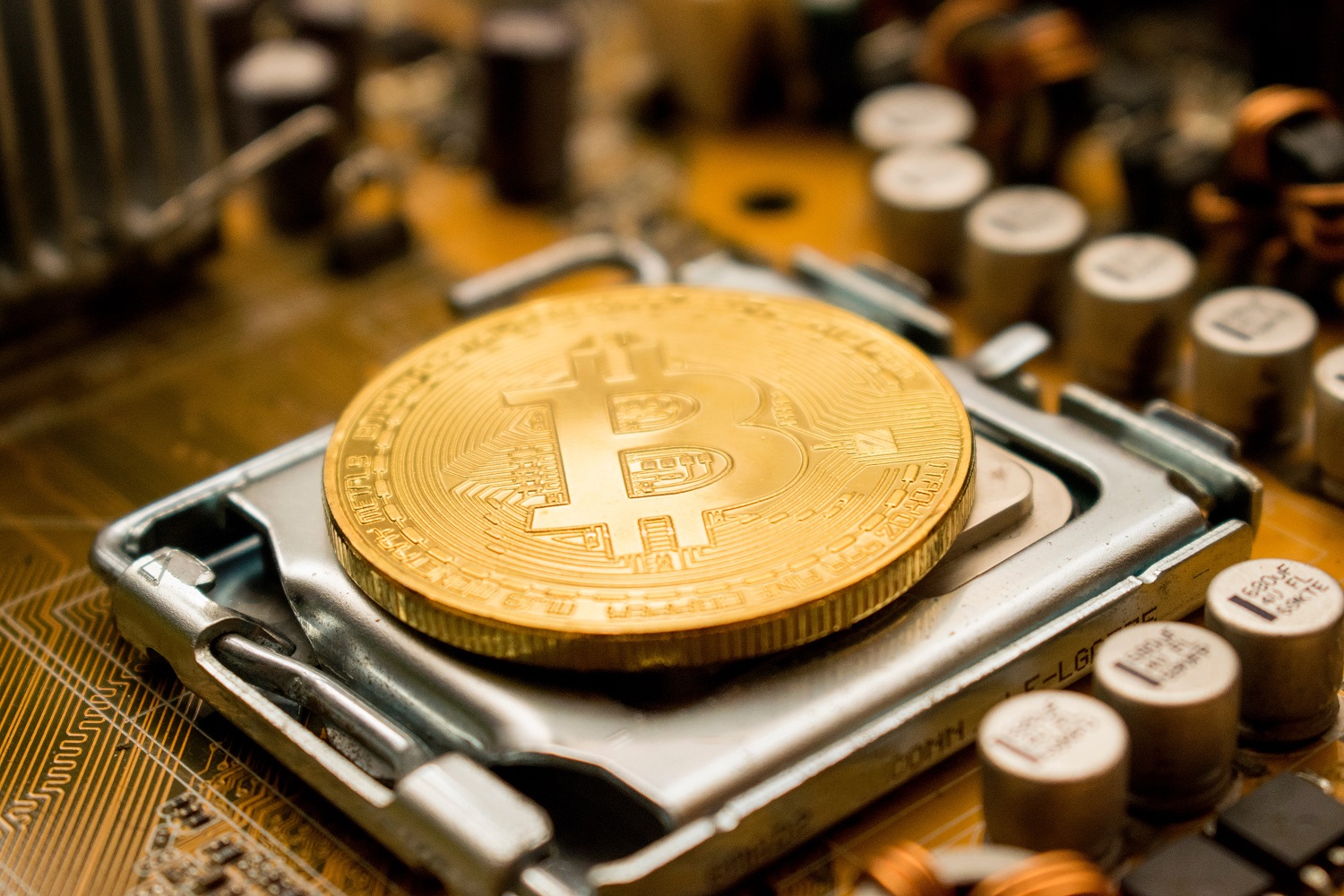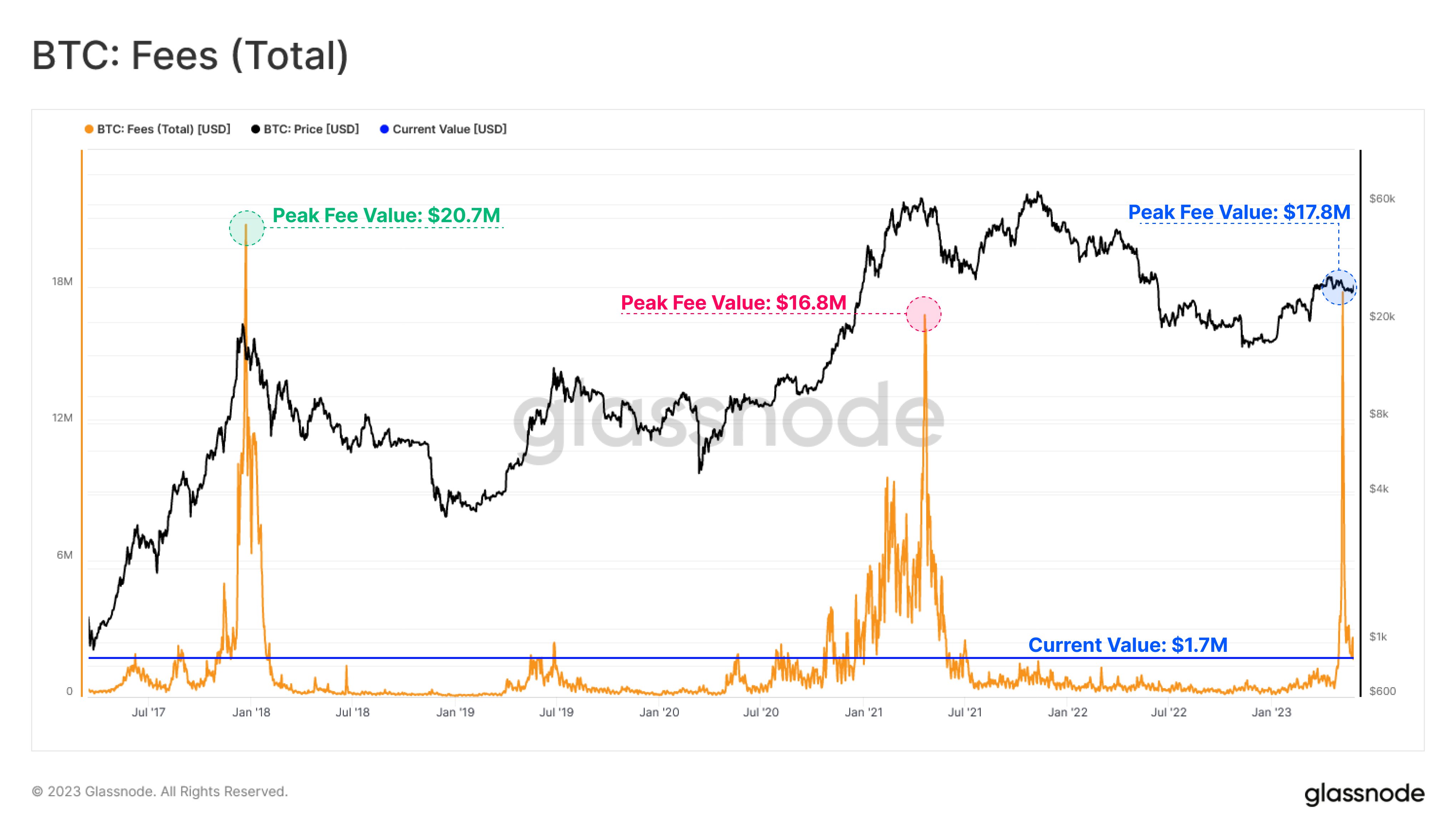Data shows that the Bitcoin miners’ revenue from transaction fees has dropped 90% as the BRC-20 token frenzy has slowed.
Bitcoin Miners Are Now Making Just $1.7 Million In Transaction Fees
Bitcoin miners earn revenue through two main sources: the block rewards they receive for solving blocks on the network and the transaction fees they earn for handling individual transfers.
In the last couple of years, the latter’s contribution towards the total revenue had been quite small, meaning that the miners had to survive on the block rewards alone.
Recently, however, the transaction fee revenue of these chain validators observed explosively high values, thanks to the BRC-20 tokens frenzy that had taken over the market.
Generally, the transfer fee remains low when there is little traffic on the blockchain. This is because the investors do not have much incentive to attach higher fees when there are few waiting times for their transactions to be processed.
In periods of congestion, however, the competition to get transfers through becomes quite high. Since miners only have a limited capacity, they prioritize the transactions with the highest fees. Senders then naturally incur higher transaction fees to compete with others in handling their transfers first.
The BRC-20 tokens, fungible tokens created on the Bitcoin blockchain using the Ordinals protocol, emerged on the network during the past few months. Before long, they gained quite a popularity.
These tokens led to transactions skyrocketing on the network, which meant the chain became congested, and the fees showed inflation in response. At the peak, the total amount that miners were earning from the transfer fees hit historic levels.
However, according to data from the on-chain analytics firm Glassnode, the fees have dropped significantly since then as the BRC-20 tokens have lost steam. The below chart highlights the latest trend in Bitcoin transaction fees.
As the graph shows, the Bitcoin transaction fee had hit a value of $17.8 million at the height of the BRC-20 token popularity. This was an extraordinary value, as only two days during the history of the cryptocurrency have observed higher values; both occurred during the 2018 peak.
After a massive cooldown of the BRC-20 token frenzy, miners are now making just $1.7 million from transaction fees. This is only low relative to the monstrous levels seen earlier. However, when compared to what has generally been the norm, the current values are still quite elevated.
For reference, only 310 trading days in the blockchain’s lifetime (equivalent to just 6.7% of active trading life) have seen the Bitcoin miners make larger amounts from the fees.
BTC Price
At the time of writing, Bitcoin is trading around $27,900, up 2% in the last week.











